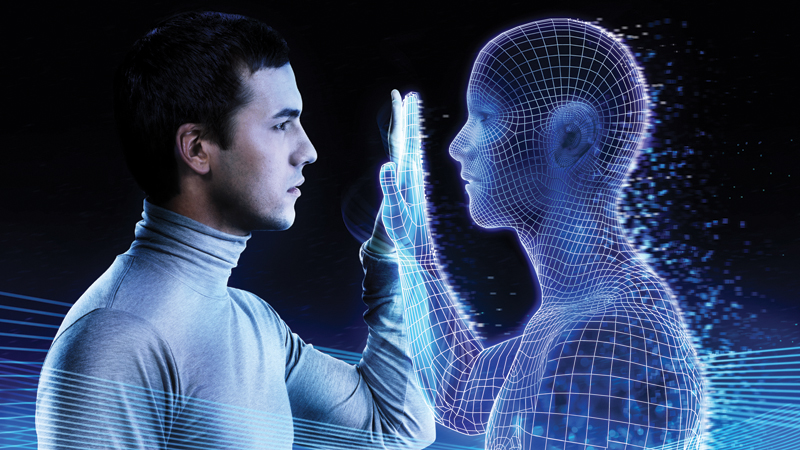Introduction
The Limiting Aspects of Digital Twins in Healthcare
Imagine a fully functional virtual doppelganger of you or your things which mimics your activities and has great grasping abilities. This broadly defines Digital Twins – virtual replicas of physical entities that go beyond a still image and encompass the dynamic functionality of the real-life object. The physical entities could be of a person, product or processes. Its core application is to understand the present and predict the future of its physical side (counterpart) in the digital world through simulation. It wouldn’t be incorrect to say that one can make as many mistakes as they want to, with a digital twin because that is essentially what it is made for, to “try-and-test” all the possible loopholes of its counterpart by simulating the component of interest.
Digital twin has long been adopted in the manufacturing division of sectors like automobiles and aerospace, it is now disrupting the healthcare industry. Within the healthcare setting, they allow better examination of counterpart’s performance so as to address a range of health-related queries and optimize the healthcare workflow. Digital Twins: The Game-Changers in Healthcare Research summarizes digital twins as a concept for life sciences, and a range of its clinical and operational applications across healthcare research, payors and providers. However, this simulating fusion of transforming technologies like AI, Cloud, IoT, software analytics, and XR has concerns in multitude.
In this article, we intend to take a closer look at the limiting aspects of digital twins within the healthcare industry. Let us break down some of the roadblocks experienced in the application of digital twins in different types of model –
The person – a digital twin of a human or human organ is essentially developed by simulating the patient’s physiological and psychological functions to devise personalized care – therapies, medicines, surgeries etc. by giving a better understanding of their response to treatment and therapy.
A few tech firms have developed digital twins of human organs, for example, the ‘Blue Brain Project’ of creating digital models of human brain using supercomputers by Hewlett Packard Enterprise in collaboration with Ecole Polytechnique Fédérale de Lausannes (EPFL). Trained algorithms of the massive Siemens Healthineers database holds >250 million annotated pictures, reports and operational data that makes it possible to develop digital heart models. This organ model replicates patient parameters – size, muscle contraction, ejection fraction. Philips too have created their own virtual heart. The challenges experienced in modeling digital twins of a human or human organ are:
Composite nature of data
Human digital twin working is affected by a wide range of factors. In addition to the ones common with technology – temperature, humidity and noise; human’s get affected by social environment, atmosphere, mood, virus, bacteria and so on. The representation of this range of variables in digital space is posed as a challenge, focusing majorly on physiology, psychology, biology, biochemistry and genetics.
For creating digital twins of other human organs and ambitiously speaking, a complete human, our genetic uniqueness is one of the reasons that a special data structure or class is required to consolidate these attributes. Furthermore, patterns of human behavior could consist of interrelation, correlation, rules and casualty among the environment or subject of interest. So, challenge posed here is in determining this pattern-based information which is more complex than an event-based task (eg. anomaly detection).
Ethical concerns
Creating empathy and understanding for outside entities, in human models of digital twins is revolutionizing the understanding of a patient’s response to the disease, drug and the treatment. However, for people to utilize these benefits, social and ethical acceptance is posed as a challenge. Developing human digital twins with identical appearances and thoughts, naturally creates a psychological resistance among the society. Moreover, aggregating all types of information about oneself further perturbs the people – on account of privacy.
Despite the fact that constructing a human digital twin will cause a large paradigm shift by doubling the human knowledge and multiplying our abilities and activities, bioethical limitations makes it to this list.
The product – a digital twin of a real-world product is created by simulating the subcomponents equivalent of the physical product. A digital twin of medical devices enables developers to test its characteristics and applications in order to test the success or failure of the modifications in a virtual environment before getting into production. This significantly reduces the costs of failures, and ensures enhanced product performance and safety.
One of the examples of diagnostics using the digital twin model is the FDA approved Cardio Insight mapping system from Medtronic which collects and combines the patient body surface electrical data with heart-torso anatomical data and provides a 3D map of the heart’s electrical activity.
This accounts for the breakthroughs in creating new sensors and data collection methods. However, obtaining up-to-date data on key indicators of the human body in a functional mode is posed as a challenge. This limits its implementation in laboratory clinical research settings at most, not so much on a digital model. Additionally, the advancements in technology and thereby the digital twin of medical device, adds cost, not making it affordable for all countries or healthcare institutions.
The process – digital twins of processes in a healthcare setting are the simulations of operations in hospitals, pharmaceutical and biotechnology companies, laboratories etc. To give an instance, a digital twin of a hospital allows testing technical and non-technical scenarios in medical settings, like, staff allocation, scheduling the maintenance of devices, testing processes, advancing alerting systems for doctors in case of an emergency, detect bed shortages and so on.
Its limiting aspect is majorly data-backing, and ensuring safe and efficient implementation. It is relatively a low risk application of digital twin due to lesser variables and no direct and serious direct implication on human life.
The challenge commonly observed across all three of these digital twin models, are of data in nature. Hunting and integrating suitable dataset, ensuring the data quality for harnessing digital twin’s optimum performance and data security. This is to steer clear of hackers who can leverage the blueprint of the physical system to study its behavior and know the working of its components, basically, having a firsthand view of the real system. Furthermore, it becomes crucial to construct a compatible IT infrastructure to set up digital twin models in and of hospitals, medical devices, patient population, drugs etc. and, many geographies are not well equipped to ensure this.
Closing thoughts…
A digital twin is reflective of the information in the real world. This allows in determining and predicting various threats and risks that can arise in the physical equivalent of these digital twins. This is exactly why it is necessary to thoroughly address the above listed impediments, regardless of whether they are technical or non-technical. For instance, leveraging the new age technologies to tackle these challenges – using 5G technology to get more real-time data to keep the digital twin updated with latest info, the blockchain technology to resolve concerns related to data security etc. With this attitude in mind, it will be possible to introduce transformative concepts and solutions, and create an orderly Digital twin world correspondent to the real world.
Author
Hemshree Mankad – Consultant, Healthark Insights
References:
- The Potential of a Digital Twin in Surgery – sagepub
- Ethical Issues of Digital Twins for Personalized Health Care Service: Preliminary Mapping Study – JMIR
- Digital Twins in Healthcare: Taking Personalized medicine from Solution to Revolution – netscribes
- Is Human Digital Twin Possible – ResearchGate
- Challenges in Using Digital Twins for Modeling Human Behavior in Environments – ResearchGate
- Challenges Facing Human Digital Twin Computing and Its Future Prospects – NTT
- Digital Twin – Top Use Cases in Healthcare – eInfochips
- Digital Twins, Internet of Things and Mobile Medicine: Review of Current Platforms to Support Smart Healthcare – Springer
- Digital Twins and Cybersecurity: What Are The Implications? – WIBU Systems
- Three Key Challenges Towards Digital Twin Adoption at Scale – Living-In.EU




